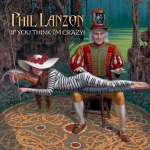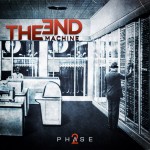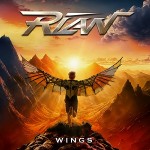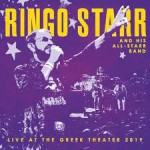Share the post "Interview with blues rock guitarist ROBIN TROWER (January 2013)"
‘Roots and Branches’ is a Robin Trower album with a difference. Conceptually, the ‘Roots’ side of things refers to his blues antecedents and some of his favourite songs that comprise the covers on the album. The ‘Branches’ section refers to the excellent 5 self penned songs which grew out of a project that showcases his tone driven guitar playing.
The former Paramounts and Procol Harum guitarist is probably best known as a post Hendrix guitar hero, with big selling albums such as ‘Twice Removed From Yesterday’ and ‘Bridge of Sighs’. Robin toured The States relentlessly for 2 decades and teamed up with Jack Bruce in the early 80’s.
By the mid 80’s however, the roadwork took its toll, leading to a 5 year sabbatical, before he belatedly returned to his blues roots. An excellent recent brace of albums ‘What Lies Beneath’ and ‘The Playful Heart’ suggested a subtle push in the direction of his guitar playing again, via some of the best song and most original arrangements of his career.
‘Roots and Branches’ was originally slated as a covers project with original arrangements, but as Robin explains; “It’s grown into something different again”.
The moments of serene introspection, layered sounds and deeply wrought guitar parts, all hang together to shape an organic album full of exhilarating guitar playing. Topping it all is the Hendrix style, psychedelic avalanche of ‘See My Life’, on which Robin sounds like he’s come full circle.
Pete Feenstra asked Robin how the new record came together?
The original idea for doing it was to have some fun on the guitar and I thought if I did this kind of material then I could let loose a little bit.
The most impressive thing about this album is the way some of your new songs meld with the excellent arrangement of the covers?
Well thank you very much, I appreciate that. The original idea was to record my own versions of several of my favourite blues & r&b songs and do a whole album of them. I was originally looking at 15 songs all together, but I only had 6 original arrangements of the older material that really worked. In the end I decided to write some new stuff with the same approach that I applied to the old songs. It was at that point that I decided to try and write some new stuff and see if we could make it all fit together.
Were the covers songs that influenced you along time ago or just blues stuff that you happen to like?
They were just basically some of my favourite songs really – some were very old and others go back to when I was growing up. So really they weren’t so songs that influenced as just songs that I love.
You often said that you are driven by song-writing, but a covers album suggests you needed a break from searching for new ideas?
No I don’t think so, as I have continued to write all the time, but the idea of doing blues and R&B songs was really an opportunity for me to have some fun and play guitar on them. I saw the whole project as just being that really.
Some of the songs on this record are the best songs you written for a long time. I’m particularly thinking of ‘When I Heard Your Name’, ‘Sheltered Moon’ and ‘See My Life’.
Thanks very much. I had an idea of what I was aiming for, but you obviously don’t know how successful you’ve been with that until others hear the results. And then you obviously wait to see how they are received.
Your last three solo albums have all been more introspective and bluesy. Does this approach reflect your on going love of the blues or do you have a newfound song-writing maturity?
Well I’ve always tried to write original blues songs although sometimes they don’t always come out like that at all. Some of my early songs such as “Bridge of Sighs” for example, were my first attempts at writing blue songs.
Did you ever worry about having to carry your fans with you on this album?
Probably not so much on this album, as it’s got more of a bluesy direction. I must admit that hasn’t been a worry about this album at all really, as most people who buy my stuff are into my guitar playing and there’s a good amount of that on this album.
You have said in previous interviews that sometimes the lead solos grow out of the song, and at other times you might find a song through a guitar part. Are they not sometimes antithetical?
I must admit all the songs I’ve written for this record and even the arrangements of the covers all come out of my guitar playing. The thing is I’m fundamentally a guitar player before I became a song writer. So the guitar part has to fascinate me to start with and I have to believe in something that can grow into a track before I put the top lines – the lyrics and melody – at the top. So for me its all about the playing initially, but the compositional side is also very important and that‘s what you mean by the solos growing out of the compositions. So it’s very important for me that the solo work is an inherent part of the composition.
Do you search for emotion in your music through your guitar playing and tones, or does it sometimes come from your lyrics?
Well as I said I always start with the guitar and everything else builds from that. The real joy is when the music and lyrics meld together.
I didn’t realise until looking at the credits that Richard Watts sings on 5 tracks. At times both of you are indistinguishable and it also contributes to a consistent flow of the album. Was that your intention?
Yes definitely. Richard’s phrasing is pretty much the result of the way I put them down. It’s probably because I demo’d all the vocals myself first before I got him to sing them. Basically, I wanted him to sing them the way I laid them down. I like to have control of the vocals so I can get the right feel on track and what I think is right for the song. So I guess it’s not a surprise that we sound similar.
The big tones and string bends on ‘The Thrill is Gone’ gives the track a very dreamy arrangement?
I really just tried to come with something that was my own take on what is basically a great song. In fact every one of the old songs that I do is really just me using a skeleton of the song before I attempt put my own interpretation on it.
‘When I Heard Your Name’ is another great new song with a percussive groove?
Thanks very much, I do like that one. I already had that before I started recording the old stuff. I had to change the arrangement to the one you hear now, to make it fit into the overall concept of the album.
Did you think it fitted Richard Watts vocals better than yourself? Didn’t you want to sing that yourself?
I thought he could do a better job than me and so I asked him to have a go at it and it turned out great
You seem to have saved some of your deepest tones for ‘Little Red Rooster’?
I appreciate that. Obviously you set out with a particular aim, but as with the rest of the new material you don’t know if achieved those aims until you get the feedback.
‘I Believe To My Soul’ is arguable the best arrangement on the album. Did you approach that song as a slow building piece, topped by a solo?
Yeah that was the approach. It’s such a beautiful song that – a simple thing – but a beautiful song. I don’t think I’ve ever played lead work with quite that amount of feel and mood before and I tried to keep it soulful
Where did that repeated guitar motif on ‘Shape of Things To Come’ come from?
The Motif came later, as originally I had a different guitar part for that section. Then I came up with something different which had developed when I was working in the studio on it.
Are the tones and a cool organ arrangement on ‘Save Your Love’ examples of your latter career style?
Yes I would say it is my current style really. I do feel that when I look at the latest material on ‘Roots & Branches’, it has really opened the door for me into an area where I enjoy being comfortable, so I’d say that’s a good point.
Conversely, ‘Born Under A Bad Sign’ has echoes your early career style?
Great. That again was all about coming up with that original riff. That is what the track is really all about. And once again it’s just another great song.
‘Sheltered Moon’ is one of your best songs and has echoes of James Dewar and Davy Pattison
Er, well, it’s got a lovely atmosphere to it so I suppose that might be the connection.
There’s also great line in the song; ‘She Drew her thoughts from the deepest well”.
Thanks very much I really appreciate that
The epic ‘See My Life’ is a wah wah driven Hendrix sounding piece and probably the album highlight?
I must admit that kind of thing is very, very hard to pull off in the studio as it’s basically really a live performance.
Are we likely to see you play that that live at all?
Actually I was already playing it on my last tour of German and Holland and it seemed to go down well.
Presumably years ago a lot of the material you recorded had been worked out on the road. Do you do the opposite nowadays?
Very much so yeah, I mean I tend to do all my writing at home now. I worked on this album in a particular way. I built it up from nothing to a click track, and then I would do a little bit more and would record bits. I’d then take that bit home and listen to it and then maybe do some more work on my own at home. I’d then come back to it and build it up. Finally when I was happy with guitar and vocal parts, I would add the bass and drums etc and other instruments.
Paul Jones appears on harp on a couple of songs. How did that come about?
I did a charity concert called ‘Blues For Heroes’ that Paul asked me to play on, and while doing that I asked him to play on my new album. He very kindly said he would and it worked really well.
You used guest musicians on “What Lies Beneath” and the core of your tour band on “Playful Heart”. Do you change personnel according to the project as a whole, or on the material in particular?
A bit of each really. With “Playful Heart” I thought it would be nice to use the road band as we’d worked so much together. But what I didn’t like about that concept was that I had to have them all over from America, which meant I had to record it all in a certain amount of time. What I liked about this album is that I can take my time and I’m not tied to getting the basic tracks all down in one fell swoop as it were.
Was ‘Song For A Dreamer’ on Procol’s “Broken Barricades” album the moment when you first realised your own style?
Well it was one of the first songs that I’d written that was really successful as a recording. I went on from there, to come up with more and more ideas and they were sort of flowing. In the end I realised that if I was going to end up pursuing all these ideas and to make records then I would have to get my own unit together.
Was your solo success with “Bridge of Sighs” etc a vindication of striking out on your own?
Well obviously the record worked out. Also I was very, very fortunate that I ran into the singer James Dewar, You know a major reason why that music was so successful was his vocal, which enabled the music to cross over
Going back to the 70’s did you specifically write with James Dewar’s voice in mind?
Oh yes definitely. He was unique and his voice lent itself to that.
Why do you think Jude the band with you, Frankie Miller and Clive Bunker didn’t work?
Yeah, it should have worked shouldn’t it? Maybe the original concept of it wasn’t right for the group of musicians at the time. Frankie went on to do really well with his own song writing. I think I ended up needing to have more space I think, and I didn’t really want to work as a backing musician
How was it working with Jack Bruce again after all those years?
Oh it was fantastic. We really hit it off in creating the material and it came together quite nicely and easily. He brought in Gary Husband, and it was a very easy album to make. It flows along nicely and didn’t take a lot if time.
Were you surprised that the song-writing partnership worked so well?
I don’t know about surprised, but I mean I was very happy it did. When you work with someone as gifted as Jack you kind of expect it will be great.
Going back to Procol Harum, were Keith Reid’s lyrics written before or after the music?
I think I’m only aware of him writing the lyrics first.
You were often compared to Hendrix in the 70’s and you were certainly one of the few guitarists out there consistently championing his sort of music. How did you make that musical connection to start with?
Er, I suppose there weren’t too many other people playing like that. I think the musical connection came about because I came from such a potent background of early Rock & Roll and had a lot of R&B influences. That’s probably why we musically had that common threat. I’ve always said being compared to Hendrix is a great complement….
In the mid 80s you had a 5 year break. Were you fed up with music generally?
That’s right, I really wasn’t enjoying it anymore. We were playing big (hockey) arenas, in America mostly. You couldn’t get a decent sound in places like that. You couldn’t really make music in those spaces; they just weren’t built for it. I didn’t come back to the UK at that point because I really got fed up with touring.
Ironically you built your career on touring though?
Yes that is true, especially in the US and it allowed us to be so successful in the first place. But I’m happy working again now.
Bass player and producer Livingstone Brown plays on some of tracks on the album. Wasn’t he also once in your tour band?
Yes, that’s where we first worked up a partnership and we’ve worked together on and off ever since. He went on to work as a producer and mix engineer, so he doesn’t really have the time to go out on the road with me anymore, but he’s still a fantastic musician.
“Roots & Branches” is released on Manhaton records in Europe on 4 Feb 2013
Featured Artist: JOSH TAERK
Since early 2020 Josh has been entertaining us with exclusive monthly live sessions,
Check out radio stream repeat on Tuesday 8th (16:00 GMT) and Thursday 10th April (21:00 GMT)
Next Session: Sunday 4 May
Check out videos here: https://www.facebook.com/getreadytorockradio
David Randall presents a weekly show on Get Ready to ROCK! Radio, Sundays at 22:00 GMT, repeated on Mondays and Fridays), when he invites listeners to ‘Assume The Position’. The show signposts forthcoming gigs and tours and latest additions at getreadytorock.com. First broadcast on 2 March 2025.
UK Blues Broadcaster of the Year (2020 and 2021 Finalist) Pete Feenstra presents his weekly Rock & Blues Show on Tuesday at 19:00 GMT as part of a five hour blues rock marathon “Tuesday is Bluesday at GRTR!”. The show is repeated on Wednesdays at 22:00, Fridays at 20:00). This show was first broadcast on 4 March 2025
How to Listen Live?
Click the programming image at the top of the page (top right of page if using desktop)
Get Ready to ROCK! Radio is also in iTunes under Internet Radio/Classic Rock
Listen in via the Tunein app and search for “Get Ready to ROCK!” and save as favourite.
More information and links at our radio website where you can listen live or listen again to shows via the presenter pages: getreadytorockradio.com
Power Plays w/c 7 April 2025
SEVEN BLOOD To The Unknown (indie)
FROM FALL TO SPRING Incomplete (Arising Empire)
POP EVIL Side Effects (MNRK Heavy)
ERJA LYYTINEN Abyss (Tuohi Records)
SKY VALLEY MISTRESS Too Many Ghosts (New Heavy Sounds)
RED GIANT Free Me (indie)
Featured Albums w/c 7 April 2025
09:00-12:00 The Best of 2003 – 2024 (Melodic Rock)
12:00-13:00 The Best of 2003 – 2024 (Melodic Hard Rock)
14:00-16:00 The Best of 2003 – 2024 (Singer Songwriter)
Our occasional Newsletter signposts latest additions to the website(s). We also include a selection of recent top albums, based on GRTR! reviewer ratings. The newsletter is sent out a few times a year.
If you’d like to register to receive this occasional mailing please complete the form:
If using a smartphone/tablet please tap here or re-orientate your device
(Note that this registration is separate from site registration which allows you to leave comments and receive daily emails about new content. If you wish to register for this – in addition or separately – please click or tap here – for more information – the form is at the foot of each page. Please read our privacy policy when opting-in to receive emails.
Recent (last 30 days)
Share the post "Interview with blues rock guitarist ROBIN TROWER (January 2013)"

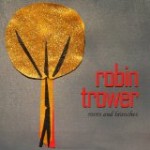



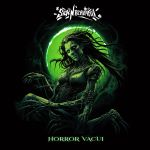

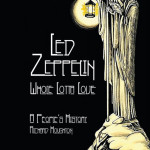
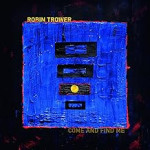

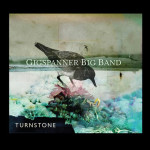
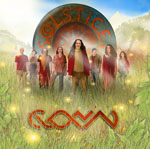
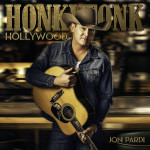
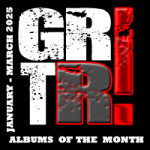
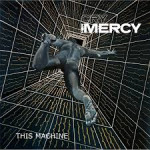
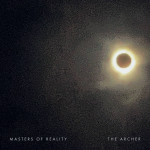

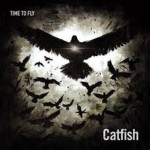
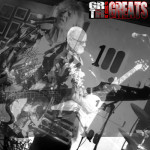
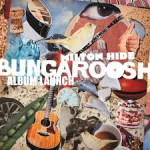
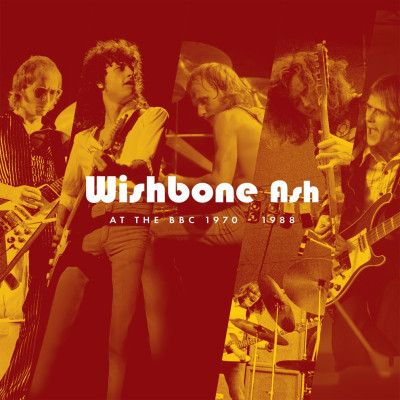
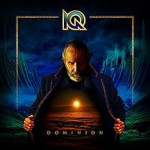

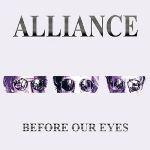
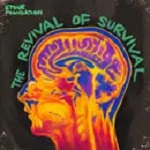
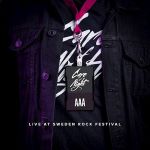

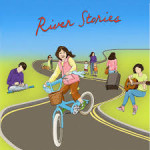
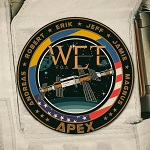
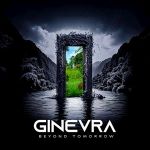
 PDF - you can delete unwanted sections
PDF - you can delete unwanted sections
















